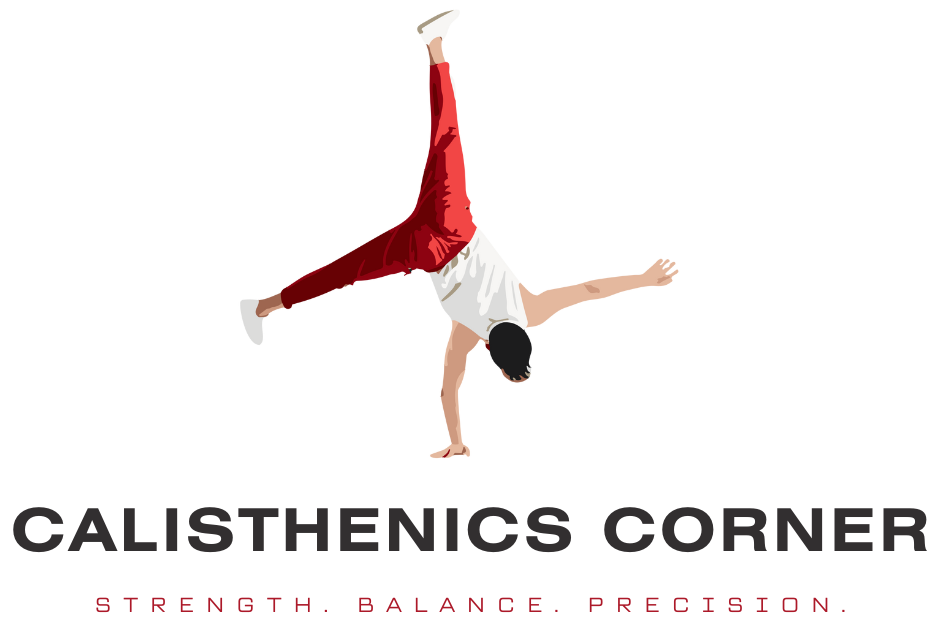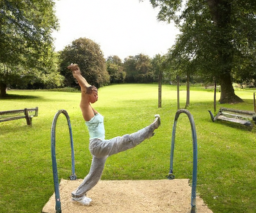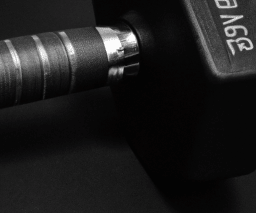If you’ve ever wondered whether calisthenics can be considered a form of cardio, you’ve come to the right place. In this article, we will explore the question: Is Calisthenics Cardio? Calisthenics, a type of exercise that uses body weight movements to build strength and endurance, has gained popularity in recent years. But does it provide the same cardiovascular benefits as traditional cardio workouts? Let’s find out.
What is Calisthenics?
Calisthenics is a form of exercise that focuses on bodyweight movements and uses minimal equipment. It is a combination of strength training and aerobics, aiming to enhance muscular endurance, flexibility, and mobility. Unlike traditional weightlifting, calisthenics exercises use your own body weight as resistance, making it a versatile and accessible form of exercise for people of all fitness levels.
What is Cardio?
Cardio, short for cardiovascular exercise, refers to activities that increase your heart rate and improve your cardiovascular fitness. These exercises primarily aim to strengthen the heart and lungs, enhancing their ability to pump oxygen-rich blood to the muscles. Common forms of cardio include running, cycling, swimming, and aerobic classes. Cardio exercises are an essential component of any well-rounded fitness program, as they offer numerous health benefits.
Benefits of Calisthenics
Muscular Strength and Endurance
Calisthenics workouts are excellent for developing muscular strength and endurance. By using your body weight as resistance, you engage multiple muscle groups simultaneously, promoting efficient muscle development. Regular calisthenics training can lead to increased muscular strength, making daily activities easier to perform. Additionally, improved muscle endurance allows you to sustain physical exertion for longer durations.
Flexibility and Mobility
Flexibility and mobility refer to the range of motion in your joints and muscles. Calisthenics exercises often require full-body movements that challenge flexibility and mobility. As you perform exercises such as lunges, squats, and pull-ups, your joints and muscles adapt and become more flexible. This increased range of motion can enhance your overall athletic performance and reduce the risk of injuries.
Improved Body Composition
Calisthenics can play a significant role in achieving a favorable body composition. Body composition refers to the relative proportions of fat and lean mass in your body. Regular calisthenics workouts can help you build lean muscle mass while reducing body fat. As muscle mass increases, your metabolism also improves, leading to more efficient calorie burning and weight management.
Functional Fitness
Functional fitness is the ability to perform everyday activities with ease and efficiency. Calisthenics exercises mimic natural movements, making them highly functional for daily life. Whether you need to lift heavy objects, climb stairs, or carry groceries, calisthenics can improve your overall strength, mobility, and stability, making these tasks less challenging.
Cardiovascular Fitness
Definition
Cardiovascular fitness, also known as cardiorespiratory fitness, refers to the ability of your heart, lungs, and blood vessels to deliver oxygen and nutrients to working muscles efficiently. It reflects the health and efficiency of your cardiovascular system. Improved cardiovascular fitness leads to a stronger heart, lower resting heart rate, and increased oxygen-carrying capacity of the blood.
Methods for Cardiovascular Training
There are various methods for cardiovascular training, ranging from aerobic exercises like running and cycling to high-intensity interval training (HIIT) workouts. The key is to engage in activities that elevate your heart rate for a prolonged period, challenging your cardiovascular system.
Importance of Cardiovascular Fitness
Cardiovascular fitness has numerous benefits for your overall health and well-being. Regular cardio exercise lowers the risk of heart disease, reduces blood pressure, and improves blood cholesterol levels. Additionally, it aids in weight management, strengthens the immune system, boosts mood, and enhances cognitive function.
Calisthenics as Cardio
Can calisthenics be considered a form of cardio? While calisthenics exercises primarily focus on muscular strength and endurance, some movements also provide cardiovascular benefits. To get the most cardiovascular benefit from calisthenics, you need to perform them in a specific way that elevates your heart rate and keeps it elevated for an extended period.
By incorporating high-intensity exercises, focusing on continuous movement, and minimizing rest between sets, calisthenics can become an effective cardiovascular workout. Exercises like jumping jacks, burpees, and mountain climbers can get your heart pumping and your lungs working hard, leading to improved cardiovascular fitness over time.
Calisthenics Exercises for Cardio
Jumping Jacks
Jumping jacks are a classic calisthenics exercise that can elevate your heart rate and get your blood pumping. To perform jumping jacks, start with your feet together and your arms by your sides. Jump while spreading your legs wider than shoulder-width apart and simultaneously raising your arms overhead. Return to the starting position by jumping back while bringing your legs together and lowering your arms.
Burpees
Burpees are a full-body exercise that combines strength, coordination, and cardiovascular endurance. Begin in a standing position, then squat down, placing your hands on the floor in front of you. Kick your feet back into a push-up position, perform a push-up, then quickly reverse the movement, jumping your feet back towards your hands and explosively jumping into the air. Repeat the sequence for a challenging cardio workout.
Mountain Climbers
Mountain climbers are a dynamic exercise that targets multiple muscle groups while getting your heart rate up. Start in a push-up position with your hands directly beneath your shoulders. Bring one knee towards your chest, then quickly switch, bringing the opposite knee towards your chest. Alternate between the two legs at a rapid pace, mimicking a climbing motion.
High Knees
High knees are a great calisthenics exercise for cardio that also engages your core muscles. Stand in an upright position with your feet hip-width apart. Begin jogging in place while lifting your knees as high as possible, aiming to bring them to waist level. Pump your arms in coordination with your leg movements to maximize the cardiovascular benefits.
Jump Squats
Jump squats are a high-intensity exercise that targets your lower body while providing a cardio workout. Start in a squatting position with your feet shoulder-width apart and your weight on your heels. Explosively jump up, extending your hips and knees fully. As you land, lower back into the squat position and immediately repeat the jump.
Combining Calisthenics and Cardio
There are various ways to combine calisthenics with cardio to create effective workouts. Here are a few popular training methods:
Circuit Training
Circuit training involves performing a series of exercises with minimal rest between each one. By alternating between cardio-focused exercises and calisthenics movements, you can create a well-rounded workout that challenges both your cardiovascular system and muscular strength. For example, you could alternate between jump squats, burpees, mountain climbers, and high knees, completing a set number of repetitions for each exercise before moving on to the next.
HIIT (High-Intensity Interval Training)
HIIT workouts are intense, time-efficient workouts that alternate between short, high-intensity bursts of exercise and brief recovery periods. By incorporating calisthenics exercises alongside cardio movements, you can create a HIIT workout that maximizes calorie burn, improves cardiovascular fitness, and enhances muscular endurance. For example, perform burpees at full intensity for 20 seconds, followed by 10 seconds of rest. Repeat this cycle for several rounds, incorporating other calisthenics exercises like jumping jacks and mountain climbers.
Tabata Training
Tabata training is a specific form of HIIT that consists of 20 seconds of all-out exercise followed by 10 seconds of rest, repeated for multiple rounds. By including calisthenics exercises in your Tabata routine, you can elevate your heart rate and challenge your muscles simultaneously. Consider incorporating exercises like jump squats, high knees, and mountain climbers into your Tabata workouts.
EMOM (Every Minute on the Minute)
EMOM training involves choosing a set number of repetitions for a specific exercise and completing that number of reps within a minute. Any remaining time within that minute is used for recovery before moving on to the next exercise. By alternating between calisthenics exercises and cardio movements, you can create a challenging EMOM workout. For example, complete 10 to 15 burpees within a minute, then use any remaining time to recover before starting the next exercise.
Online Calisthenics Cardio Programs
If you prefer guidance and structure, there are many online calisthenics cardio programs available. These programs provide pre-designed workouts that combine cardio and calisthenics exercises to help you achieve your fitness goals. Whether you’re a beginner or an advanced athlete, online programs can offer personalized routines and progressions to ensure a safe and effective workout.
Considerations for Calisthenics Cardio
Progression and Intensity
As with any form of exercise, progression and intensity are crucial factors to consider in calisthenics cardio. Start with exercises and routines that match your current fitness level, gradually increasing the difficulty over time. It’s essential to challenge yourself without pushing too hard, as this can lead to overexertion and injury.
Safety and Form
Prioritize safety and proper form when performing calisthenics exercises for cardio. It’s crucial to maintain good alignment, engage the correct muscles, and use controlled movements. If you’re unsure about the correct technique, consider working with a qualified fitness professional who can guide you to perform the exercises safely and effectively.
Recovery and Rest
Just like any other form of exercise, your body needs time to recover and repair after calisthenics cardio workouts. Allow yourself adequate rest between training sessions to prevent overtraining and maximize the benefits of your training. Remember to listen to your body and prioritize rest days as needed.

Conclusion
Calisthenics can be an effective form of cardio when performed in a specific way that elevates your heart rate and challenges your cardiovascular system. By incorporating high-intensity exercises and focusing on continuous movement, you can turn calisthenics into an excellent cardiovascular workout. Additionally, by combining calisthenics exercises with various cardio training methods, such as circuit training and HIIT, you can create challenging and effective workouts that improve both muscular strength and cardiovascular fitness. Just remember to prioritize safety, form, and proper progression to maximize the benefits of your calisthenics cardio training. So, lace up your shoes, get moving, and start reaping the rewards of calisthenics as cardio!








